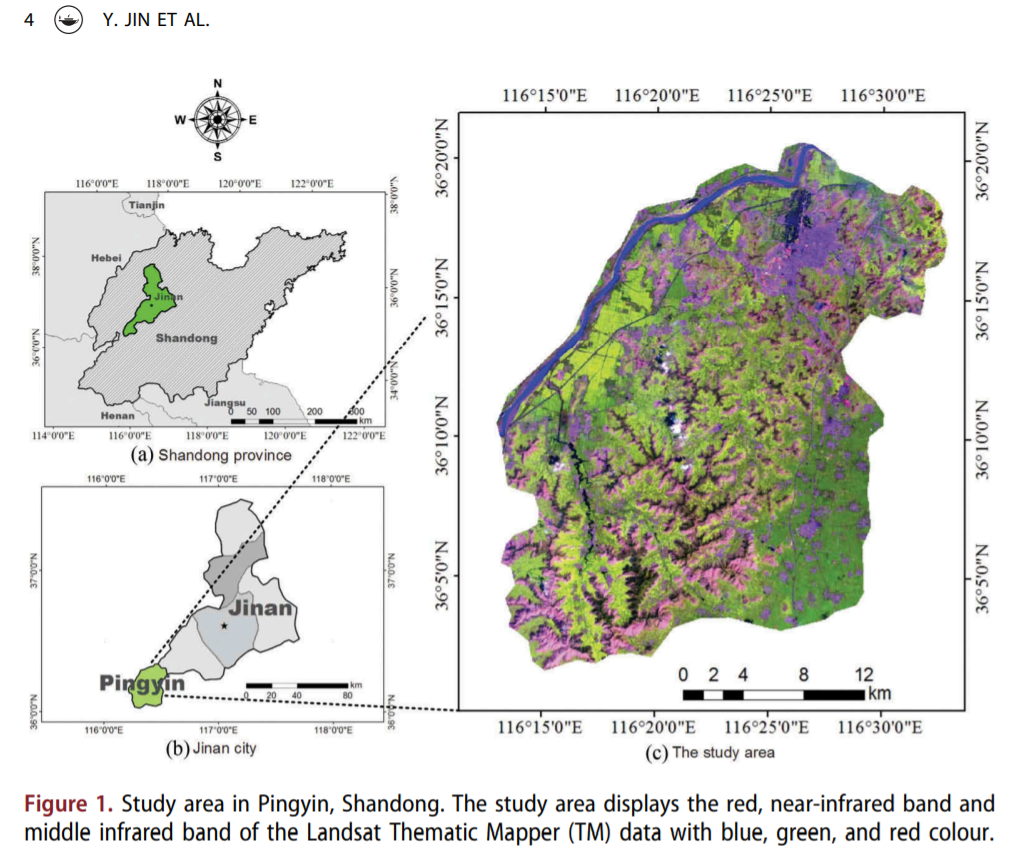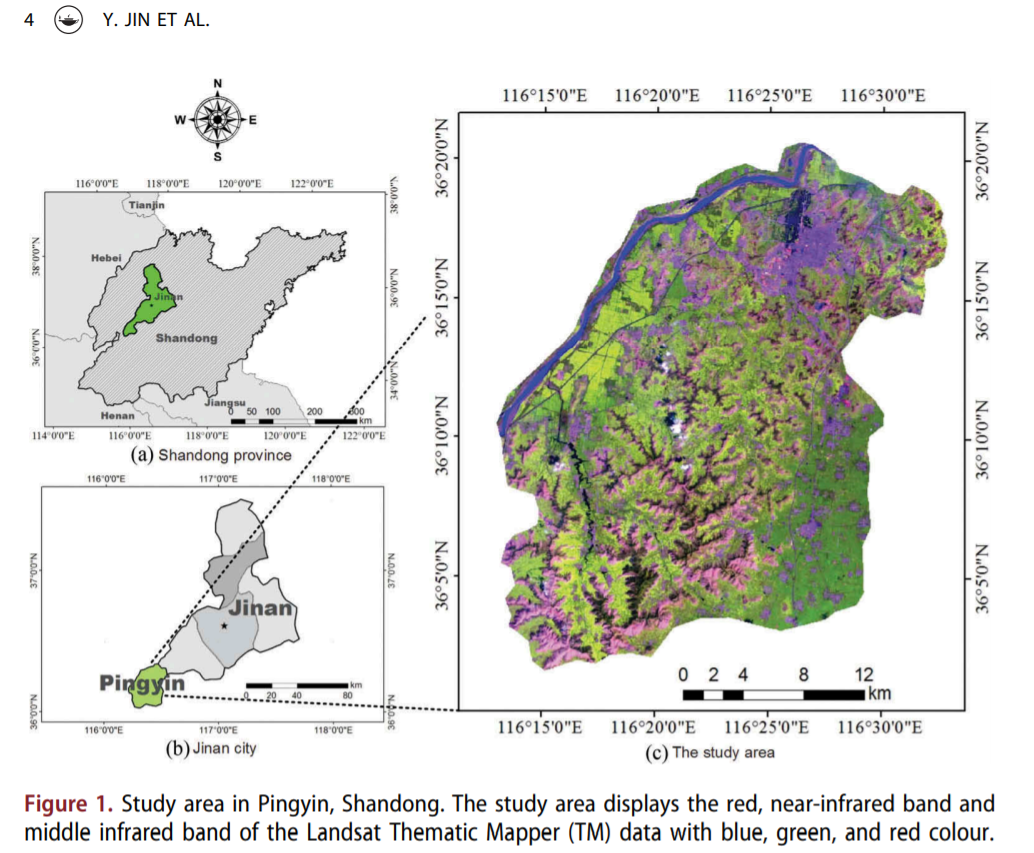Abstract
Land-cover mapping in complex farming area is a difficult task because of the complex pattern of vegetation and rugged mountains with fast-flowing rivers, and it requires a method for accurate classification of complex land cover. Random Forest classification (RFC) has the advantages of high classification accuracy and the ability to measure variable importance in land-cover mapping. This study evaluates the addition of both normalized difference vegetation index (NDVI) time-series and the Grey Level Co-occurrence Matrix (GLCM) textural variables using the RFC for land-cover mapping in a complex farming region. On this basis, the best classification model is selected to extract the land-cover classification information in Central Shandong. To explore which input variables yield the best accuracy for land-cover classification in complex farming areas, we evaluate the importance of Random Forest variables. The results show that adding not only multi-temporal imagery and topographic variables but also GLCM textural variables and NDVI time-series variables achieved the highest overall accuracy of 89% and kappa coefficient (κ) of 0.81. The assessment of the importance of a Random Forest classifier indicates that the key input variables include the summer NDVI followed by the summer near-infrared band and the elevation, along with the GLCM-mean, GLCM-contrast.

Q.E.D.










